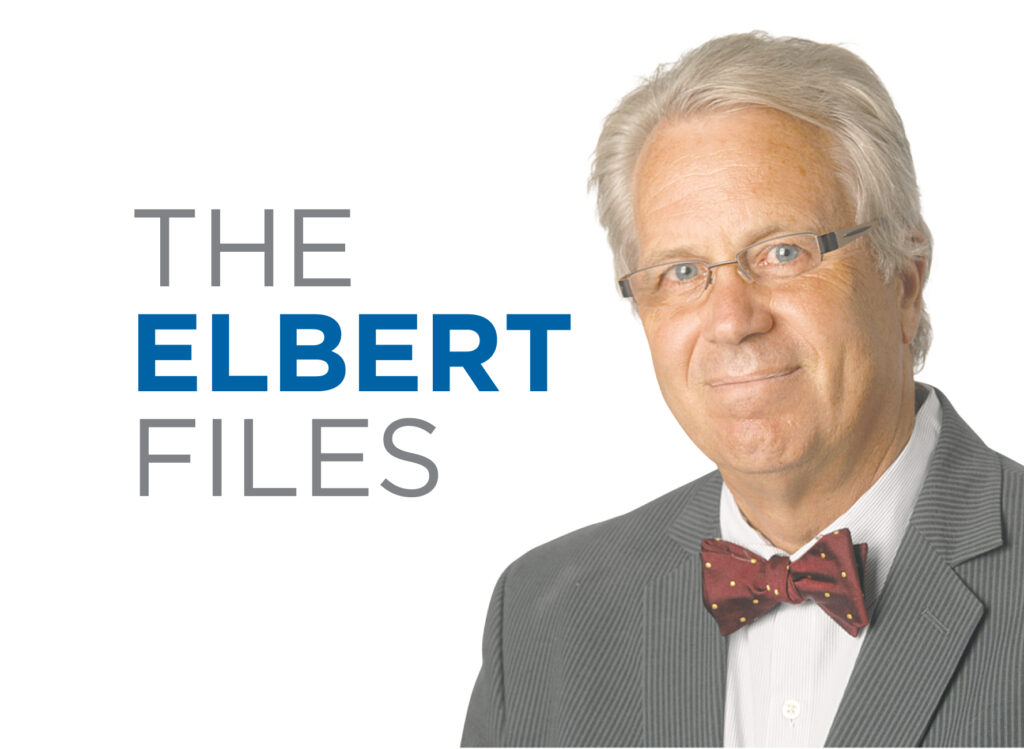The Elbert Files: Caucus conundrum

“Are you going to caucus?”
The question came from deep inside a fur-lined parka.
“You know better than to ask me that,” I said to my friend K.C. when our paths crossed on Grand Avenue near 27th Street.
“I haven’t caucused since Lyndon Johnson was president,” I said.
“Well, you should this year,” he said, “because it’s the last time anyone will care about Iowa.”
“Why is that?” I asked.
“Too many candidates. Too many rules. Too much money. Too much confusion,” he said.
“You exaggerate,” I said.
“Look at the rules,” he replied. “Democrats’ efforts to be more inclusive remind me of that old Abbott and Costello skit, ‘Who’s on first.’
“First, they say they’ll have satellite and digital caucus sites where Iowans who work late or are out of state can participate. Then they say they can’t do that because it’s too risky; someone might hack them and disrupt the whole process.
“Then they turn around and say, ‘Never mind, we’ll do it. It won’t be a problem. Or if it is, we’ll figure it out later.’ ”
“Big deal,” I said. “The number of Iowans who will participate at off-site caucuses won’t be enough to matter.”
“Probably not,” K.C. said. “But what about the new reporting rules?”
“Those could be a problem,” I agreed.
“A problem?” he said, looking incredulous. “They’ll destroy everything.
“It starts with that old goofy 15% viability rule that they’ve had forever, where candidates need 15% of the people at a caucus to be counted.
“If Andrew Yang’s supporters don’t have 15% of the Democrats at the Greenwood School caucus,” K.C. continued, “his Yang gang will have to find another candidate, if they want to be counted.
“Then,” he continued, “precinct captains will have to count heads at least three times and report all three results.
“The initial head count is a straw poll of who supports whom when they walk into the caucus.
“Then, there’ll be more head counts until all the nonviable candidates have been eliminated and their supporters have regrouped with other candidates. It could take two or three rounds of regrouping to square everything off.
“That final head count has to be reported, along with a delegate equivalent number projecting how the final count translates up through county, district and state conventions to national convention delegates.
“That much math is difficult when you have 30 or 40 people. But this time lots of caucuses will have more than 100 people. There’s no way they can do all that counting and still report everything accurately and on time for 1,678 precincts and 97 satellite caucuses.”
“That’s why each participant has to fill out and sign a card saying who they supported at the beginning and at the end,” I said. “They want to be able to go back and re-create what happened if there is a problem.”
“Oh, there will be problems, all right,” said K.C.
“It won’t matter,” he added, “because there will be plenty of confusion when different candidates claim victory. Joe Biden might claim the most delegate equivalents; Bernie Sanders might claim the most first-round support, while Elizabeth Warren might claim the most second-round support.
“But,” he said as he waited for the light at 28th Street, “that won’t be anything compared with the confusion at the national convention in July.
“A field this large with this much money guarantees that no single candidate will have enough votes for the nomination on the first ballot.
“But what the heck,” he said as the light turned, “maybe by the national convention, people will have forgotten what a mess Iowa was.”






